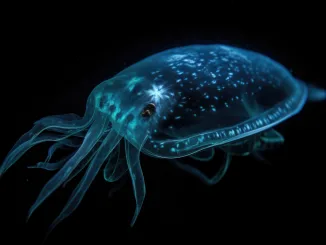
The Chikungunya virus (CHIKV)
Chikungunya virus (CHIKV) is an arthropod-borne virus belonging to the genus Alphavirus within the family Togaviridae. It is transmitted primarily through the bites of infected […]

Chikungunya virus (CHIKV) is an arthropod-borne virus belonging to the genus Alphavirus within the family Togaviridae. It is transmitted primarily through the bites of infected […]

Quorum sensing (QS) is a conserved mechanism used by bacteria to coordinate group behaviors in response to changes in population density. It allows microbial communities […]

To understand the mechanisms of ageing in Saccharomyces cerevisiae (budding yeast), a variety of experimental and computational approaches can be used, targeting the two main […]

Clostridium botulinum is a Gram-positive, rod-shaped, anaerobic, spore-forming bacterium best known for producing botulinum toxin, one of the most potent neurotoxins known to science. Biology […]

Blakeslea trispora — now we’re talking about a real biotech powerhouse from the fungal world! This filamentous fungus is famous for its natural ability to […]

Kluyveromyces lactis is a yeast species with some pretty awesome biotech uses, especially in the dairy and enzyme production industries. It’s kind of a workhorse […]

Trichoderma reesei — now that’s a legend in industrial biotechnology! It’s a filamentous fungus that’s practically a factory for cellulase enzymes, and it plays a […]

Hiochi bacteria (Lactobacillus homohiochi) are spoilage microorganisms primarily associated with the deterioration of acidic foods and beverages, especially sake. These bacteria are thermophilic (heat-loving) and […]

Mancozeb is a widely used fungicide belonging to the dithiocarbamate chemical group. It is effective in controlling a broad spectrum of fungal diseases on fruits, […]

Sinorhizobium meliloti (now more commonly known as Rhizobium meliloti following taxonomic revisions) is a species of Gram-negative, nitrogen-fixing bacterium that forms a symbiotic relationship with […]

Pseudomonas denitrificans is a species of bacterium that belongs to the genus Pseudomonas, a group of Gram-negative, aerobic bacteria known for their versatility in metabolism […]

Bacillus megaterium is a species of Gram-positive, rod-shaped, spore-forming bacterium. It is part of the Bacillus genus, which includes a number of bacteria known for […]

Penicillium bilaiae is a naturally occurring soil fungus known for its ability to improve the availability of phosphorus to plants. It’s used in agricultural settings […]

Bradyrhizobium japonicum is a species of bacteria that plays a significant role in the nitrogen-fixing symbiosis with legumes, particularly soybeans. Here are some key points […]

Escherichia coli (E. coli) is a Gram-negative, rod-shaped bacterium that belongs to the family Enterobacteriaceae. It is one of the most extensively studied and well-known […]

Agrobacteria are those used to carry tumour-inducing (Ti) or root-inducing (Ri) conjugative megaplasmids needed for virulence. Agrobacteria, also known as Agrobacterium, are a genus of […]

Candida rugosa is a yeast species belonging to the genus Candida. It is a dimorphic fungus, meaning it can exist in two different forms: yeast […]

Bacteriolytic enzymes, such as lysostaphin, have been proposed as potential alternatives to antibiotics for the treatment of bacterial infections. These enzymes work by breaking down […]

Antimicrobial peptides (AMPs) produced by Bacillus species are a fascinating and diverse group of molecules that have garnered significant attention in the fields of microbiology, […]

Biotics covers prebiotics, probiotics and postbiotics. The probiotics are beneficial microorganisms that not only reside in the gut but also have various nutritional benefits. The […]
Copyright © 2025 | WordPress Theme by MH Themes